Living in a Mumbai apartment with barely any floor space? You’re not alone. Thousands of Indian city dwellers are turning their walls into lush vertical gardens—and you can too.
Vertical gardens aren’t just trendy Instagram backdrops. They purify air, reduce indoor heat by up to 5°C during Indian summers, and give you fresh herbs right in your kitchen. Plus, they work wonders for mental health—there’s something calming about watering your wall garden after a long day.
But here’s the thing: many beginners give up after a few months because their plants wilt, pests invade, or watering becomes a daily struggle.
This guide changes that. You’ll learn exactly which materials to use, what to check weekly, how drip systems save time, and seasonal care tricks specifically for Indian climates. Ready to transform your blank wall into a thriving green space? Let’s get started.

Best Indoor Vertical Garden Maintenance Tips
Maintaining a vertical garden sounds complicated, but it’s actually simpler than caring for traditional pots—if you follow these fundamentals.
Create a Weekly Routine
Set a Sunday morning routine: check moisture levels, inspect for yellow leaves, and wipe dust off foliage. Most failures happen because people water randomly or forget to check their plants for weeks.
I learned this the hard way. During my first monsoon with a vertical garden in my Pune apartment, I kept my pre-summer watering schedule. Result? Root rot in half my plants within three weeks. Now I adjust my routine with every season change, and my plants have never looked healthier.
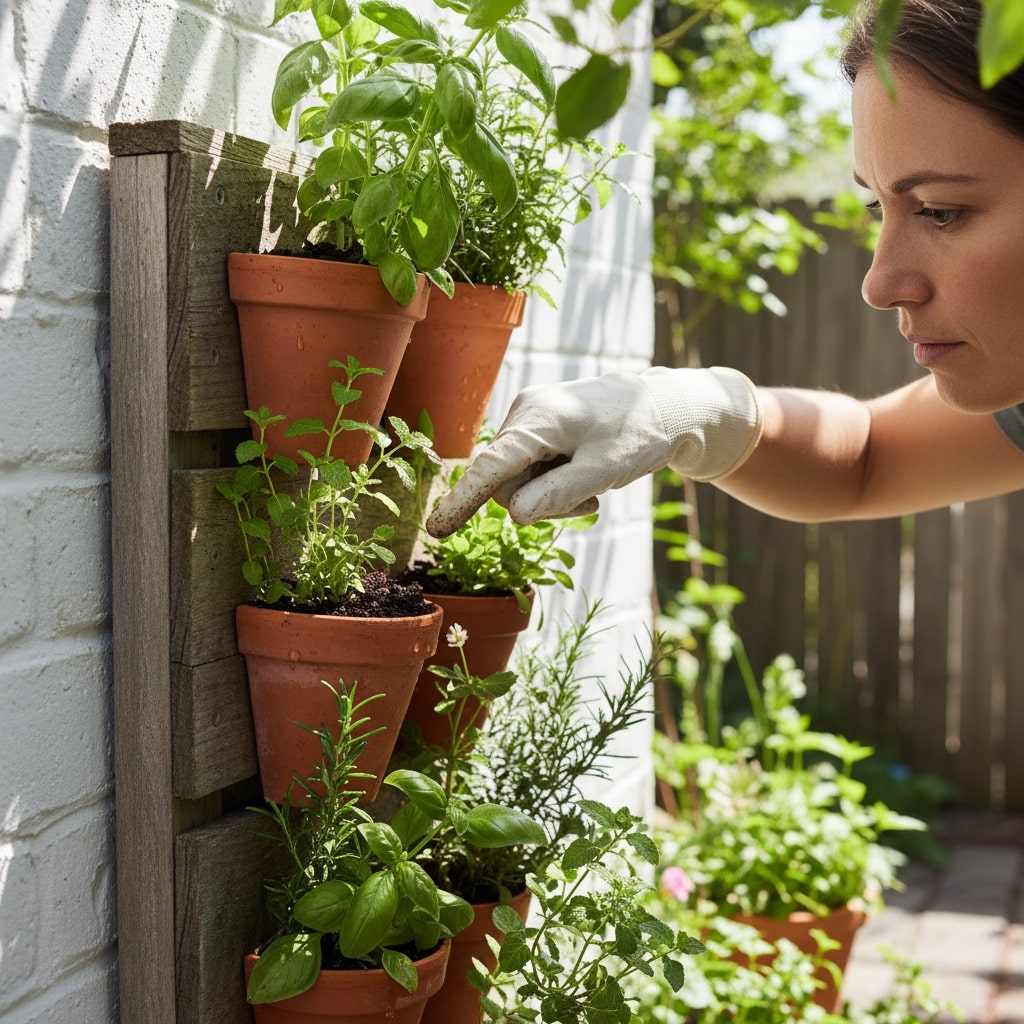
Start Small and Expand
Don’t install a 20-plant wall immediately. Begin with 5-7 hardy plants like pothos, snake plant, or spider plant. Once you’ve mastered their care over 2-3 months, add more varieties.
My neighbor Priya made this mistake—she bought 25 plants in one weekend. Within a month, she was overwhelmed with watering schedules and different care needs. She’s now down to 8 thriving plants and much happier.
Match Plants to Your Light
North-facing windows? Stick with low-light champions like peace lily and ZZ plant.
East-facing balconies get gentle morning sun—perfect for ferns, mint, and basil.
West-facing walls need heat-tolerant plants like jade or aloe vera.
This isn’t optional advice—it’s the difference between plants that thrive and plants that merely survive.
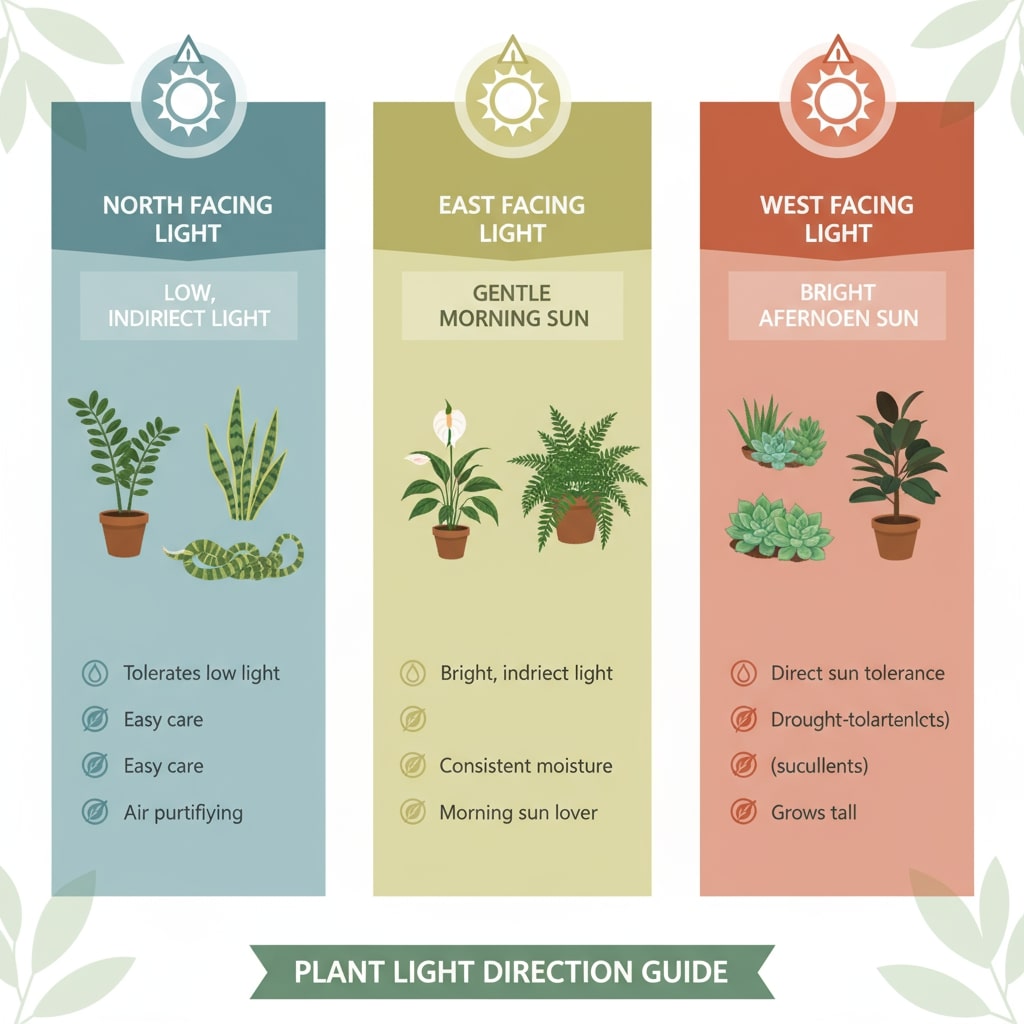
Monitor, Don’t Guess
Insert your finger 2 inches into the soil. Dry? Water deeply until you see drainage. Still moist? Skip watering. This simple habit prevents 90% of root rot cases.
Why this works: Your finger is the best moisture meter money can’t buy. Electronic moisture meters often give false readings in cocopeat-based mixes, but your finger never lies.
Keep a Simple Log
Use your phone’s notes app to track watering dates, fertilizer applications, and any problems. After a month, you’ll spot patterns—like “my fern needs water every 3 days in summer but only weekly in winter”.
Quick logging template:
- Date
- Plants watered
- Weather (hot/humid/cool)
- Any issues noticed
Internal link opportunity: New to choosing plants? Explore eco-friendly plants for gardens that thrive in Indian apartments with minimal fuss.
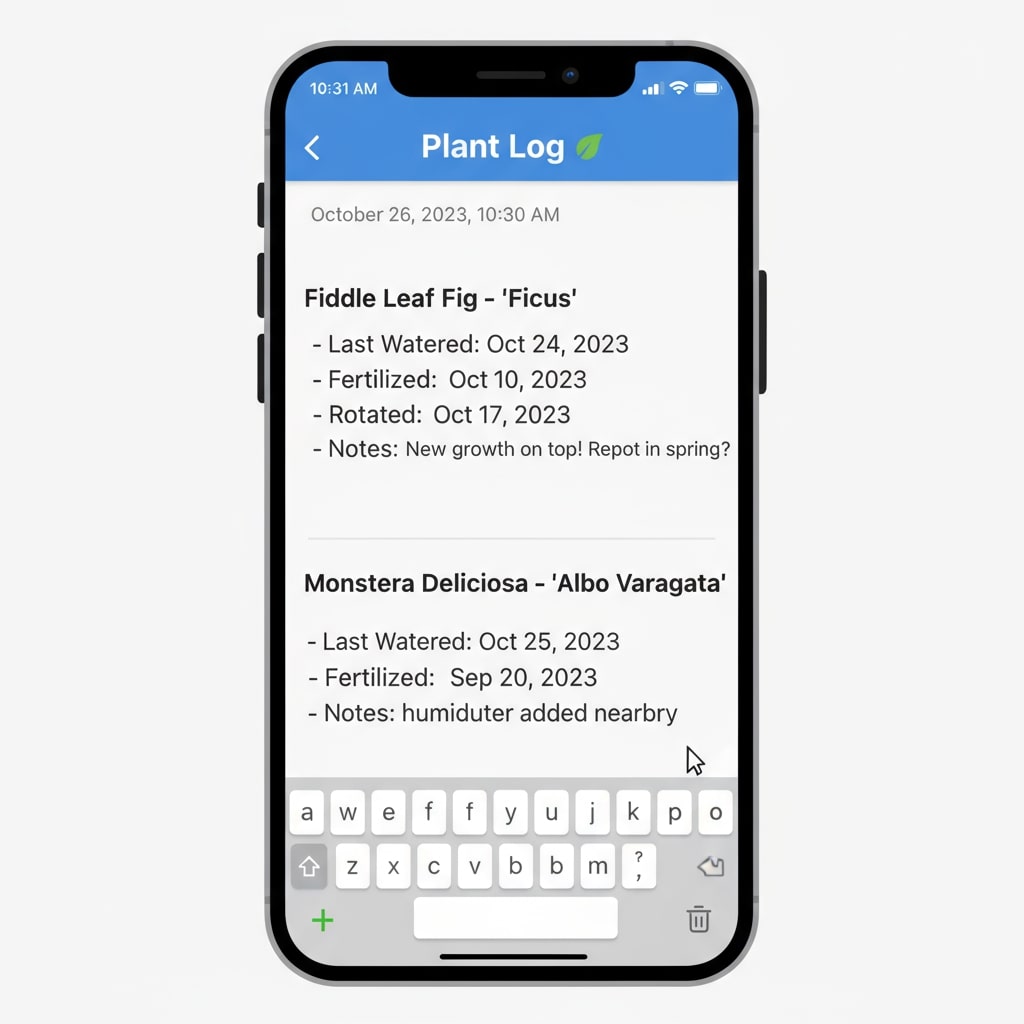
Which Material is Used to Fill Pots in a Vertical Garden
Regular garden soil is your vertical garden’s worst enemy. It’s heavy, compact easily, and holds too much water in wall-mounted setups. Instead, use lightweight soilless mixes designed for vertical growing.
Real numbers: A 10kg bag of wet garden soil weighs the same as a 4kg bag of wet soilless mix. When you have 15 planters on your wall, that’s a 90kg difference—enough to pull hooks out of plaster walls.
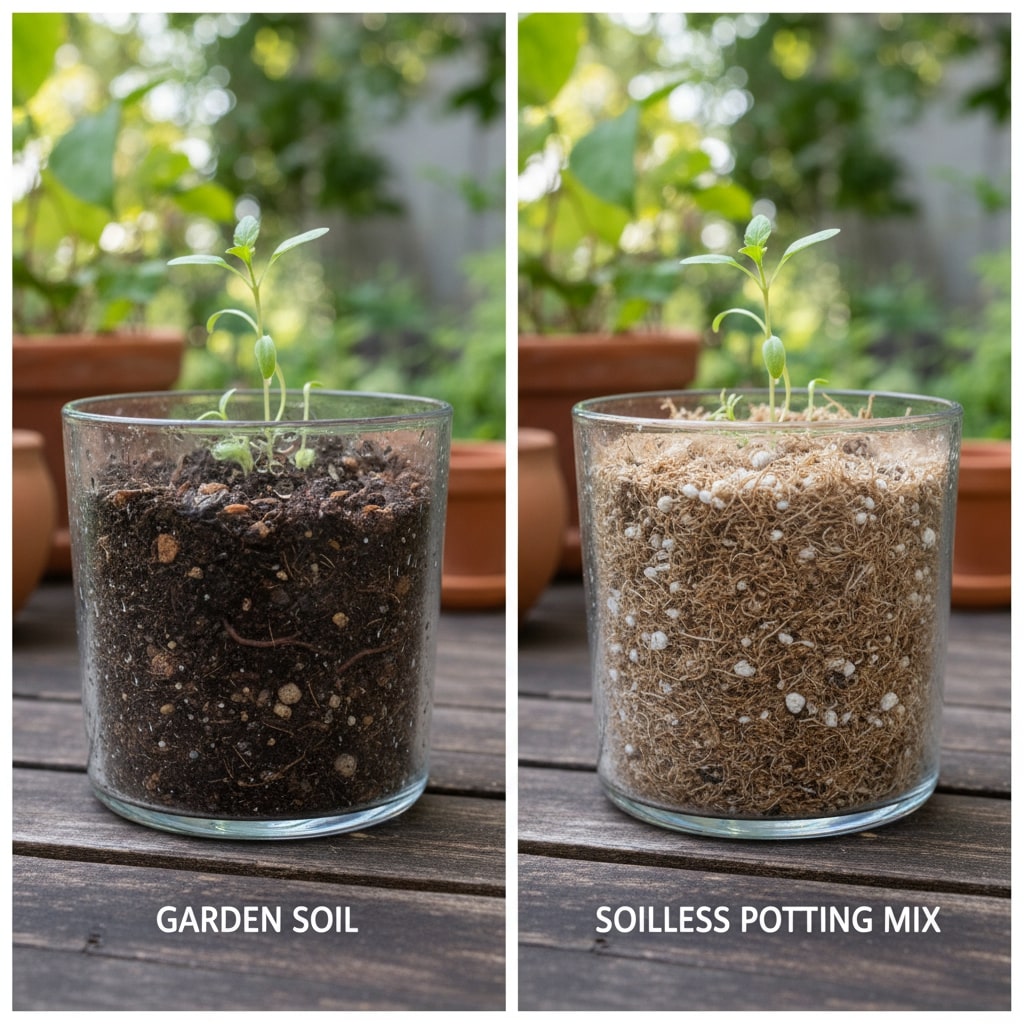
The Perfect Potting Mix Recipe
Indian gardeners swear by this simple 3-ingredient mix:
1. Cocopeat (50%): Made from coconut husks (abundant and cheap in India), it holds 8-9 times its weight in water while staying light. One 5kg cocopeat block costs ₹200-400 and expands to 75 liters.
2. Perlite or Vermiculite (25%): These white pebbles prevent soil from turning into a brick. They create air pockets so roots can breathe.
3. Vermicompost (25%): Adds essential nutrients naturally without chemical fertilizers. You can make your own or buy ready-made for ₹100-200 per kg.
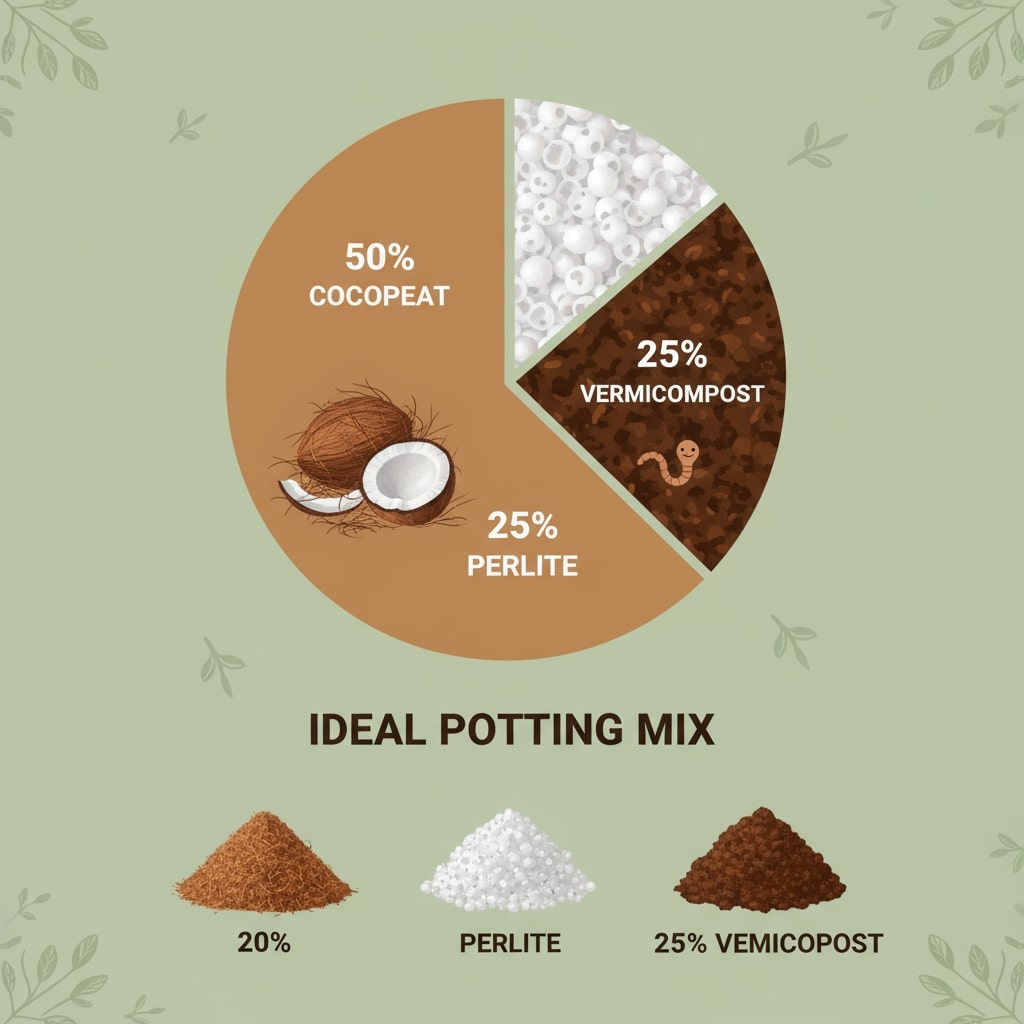
Why Skip Garden Soil?
Wall-mounted planters can’t handle heavy soil. A wet soilless mix weighs 60% less than traditional soil, reducing stress on hooks and frames. Plus, soilless mixes don’t harbor weed seeds or soil diseases.
Expert insight: According to the Indian Council of Agricultural Research (ICAR), soilless growing media reduces waterlogging incidents by 75% in container gardens.
Adding the Mix to Pots
Always create a drainage layer first. Add 1 inch of pebbles or broken terracotta pieces at the bottom of each pot, especially in planters like the Kreliv bamboo terracotta hanging planter that need extra drainage support.
Fill pots 80% full with your potting mix, leaving 1-2 inches at the top for watering. This prevents water from spilling over edges and staining walls.
Pro tip: Mix in a handful of neem powder (₹50 for 250g) to naturally repel pests for the first 3 months.
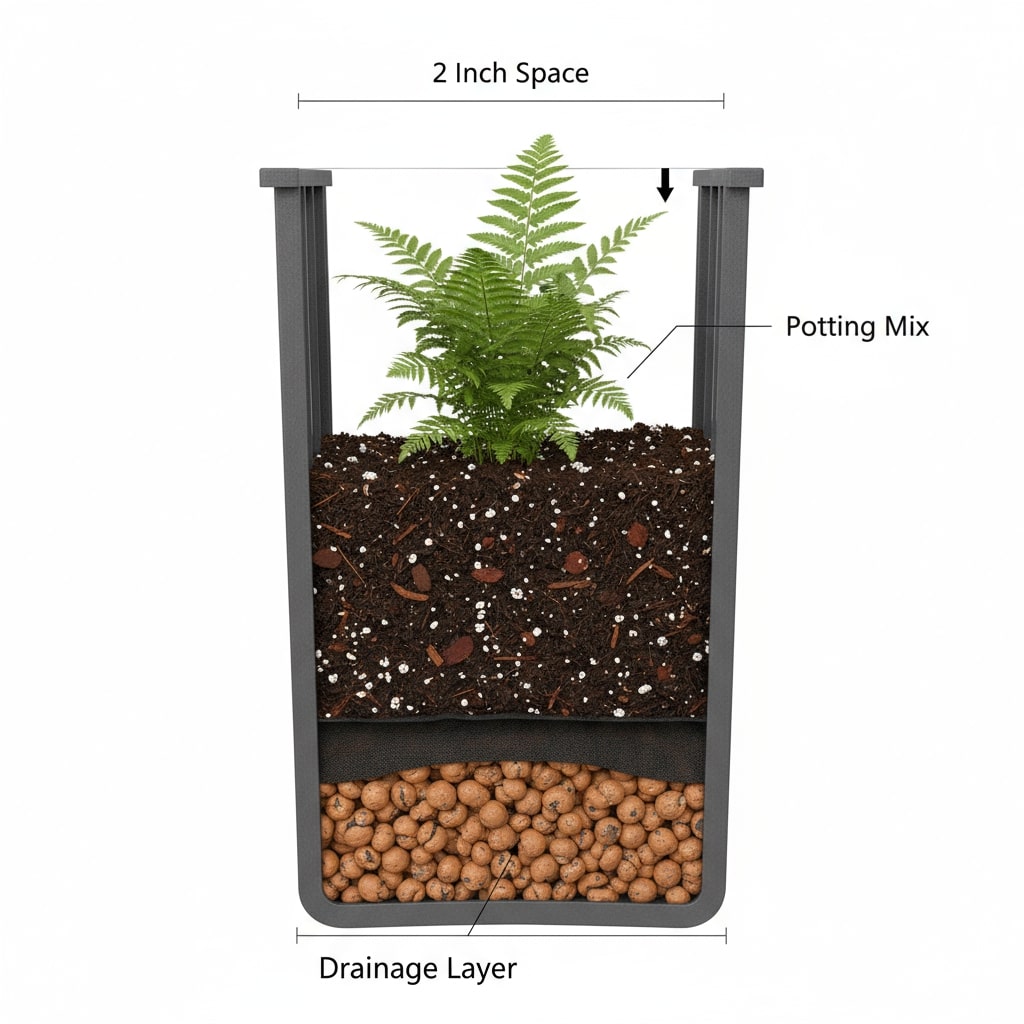
What Should Be Checked Periodically to Maintain a Vertical Garden
Think of your vertical garden like a pet—it needs regular check-ups. Here’s exactly what to inspect and when.
Every 3-4 Days
Soil Moisture: Poke your finger into the top 2 inches. In Mumbai’s humidity, you might water every 4-5 days; in dry Delhi, every 2-3 days.
Leaf Appearance: Drooping leaves mean thirsty plants. Yellow leaves signal overwatering or nutrient deficiency. Brown crispy tips? Low humidity—mist plants or use a pebble tray.
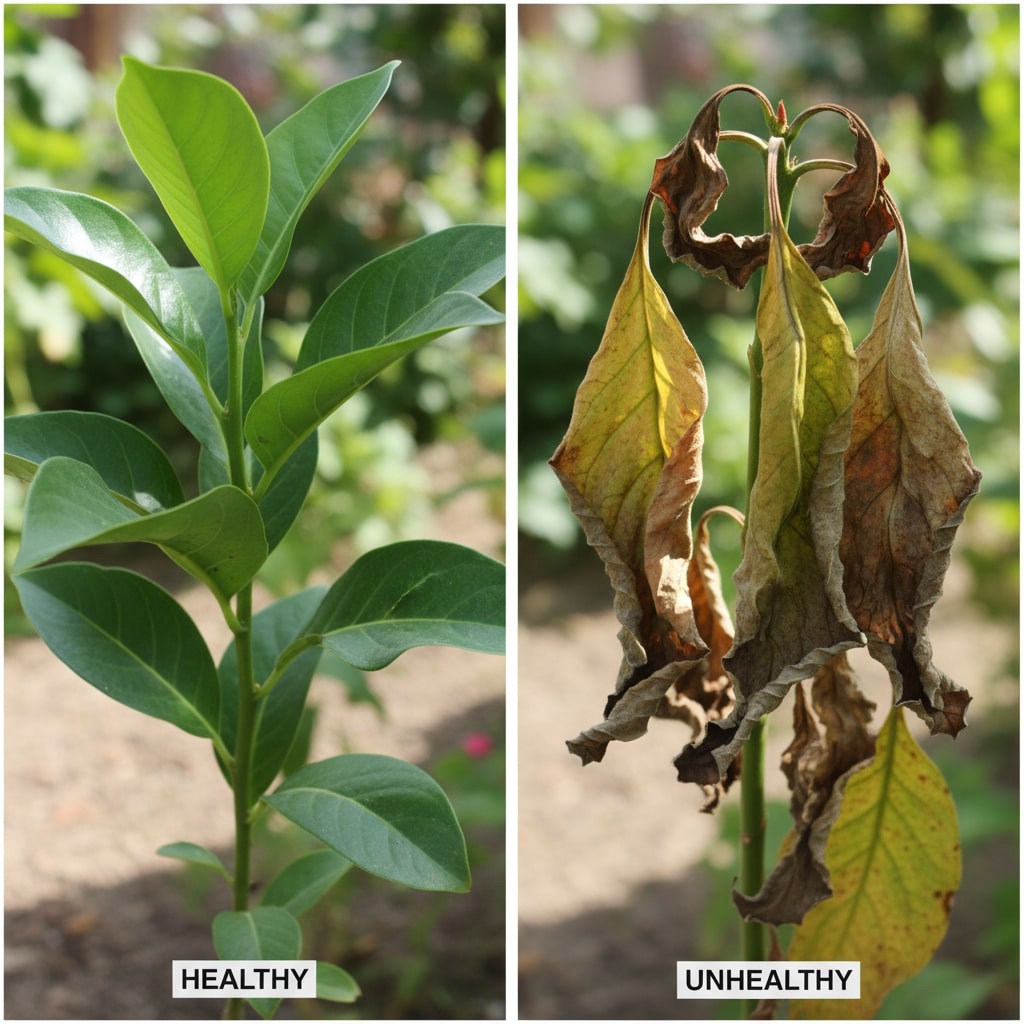
Weekly Tasks
Pest Patrol: Flip leaves and check undersides for tiny bugs. Caught early, you can wipe away aphids or mealybugs with a wet cotton swab.
Last week, I spotted three aphids on my pothos. A quick wipe with neem oil-soaked cotton, and problem solved. If I’d waited another week, they would have multiplied to hundreds.
Drainage Check: Water one plant thoroughly and watch—drainage holes should release water within 30 seconds. Slow drainage? The potting mix needs perlite added.
Structural Stability: Gently wiggle wall hooks and brackets. Loose hardware causes disasters during monsoons when pots get heavy with rain.
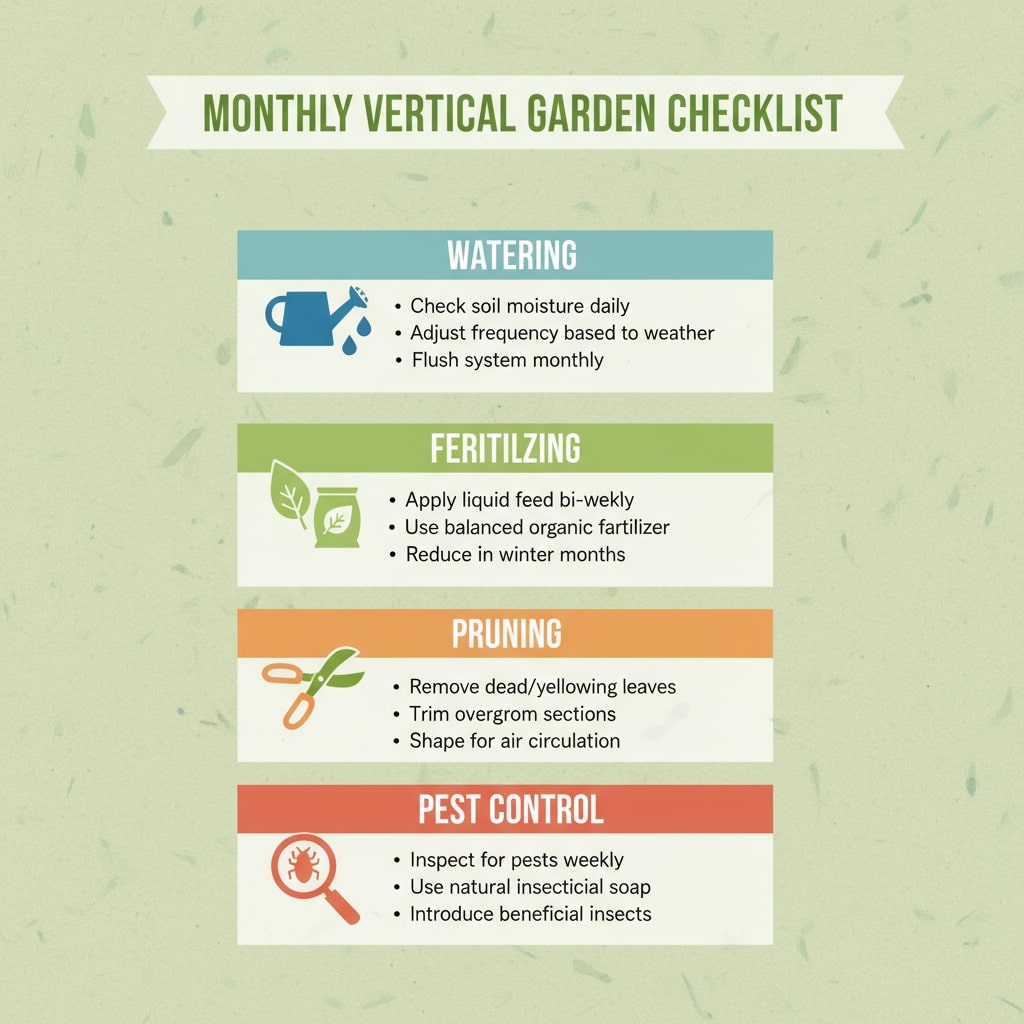
Bi-Weekly Maintenance
Drip System Inspection: If using automated watering, check each emitter for clogs. Flush lines with clean water every 2 weeks to prevent mineral buildup from hard Indian tap water.
Pruning: Trim yellow leaves, dead stems, and overgrown vines. This redirects energy to healthy growth and improves air circulation (crucial during monsoon).
Monthly Care
Fertilizing: During growing months (March-September), feed plants with half-strength liquid fertilizer. Mix 5ml fertilizer in 1 liter water—full strength burns delicate roots.
Dust Removal: City pollution coats leaves, blocking sunlight. Wipe each leaf gently with a damp microfiber cloth on both sides.
In Delhi’s pollution, I’ve noticed my plants need weekly dusting instead of monthly. The dust layer gets thick enough to actually reduce photosynthesis by 30%.
Salt Buildup: See white crust on soil surface? That’s mineral deposit from tap water. Flush pots with plain water (2-3 times the pot volume) to wash away salts.
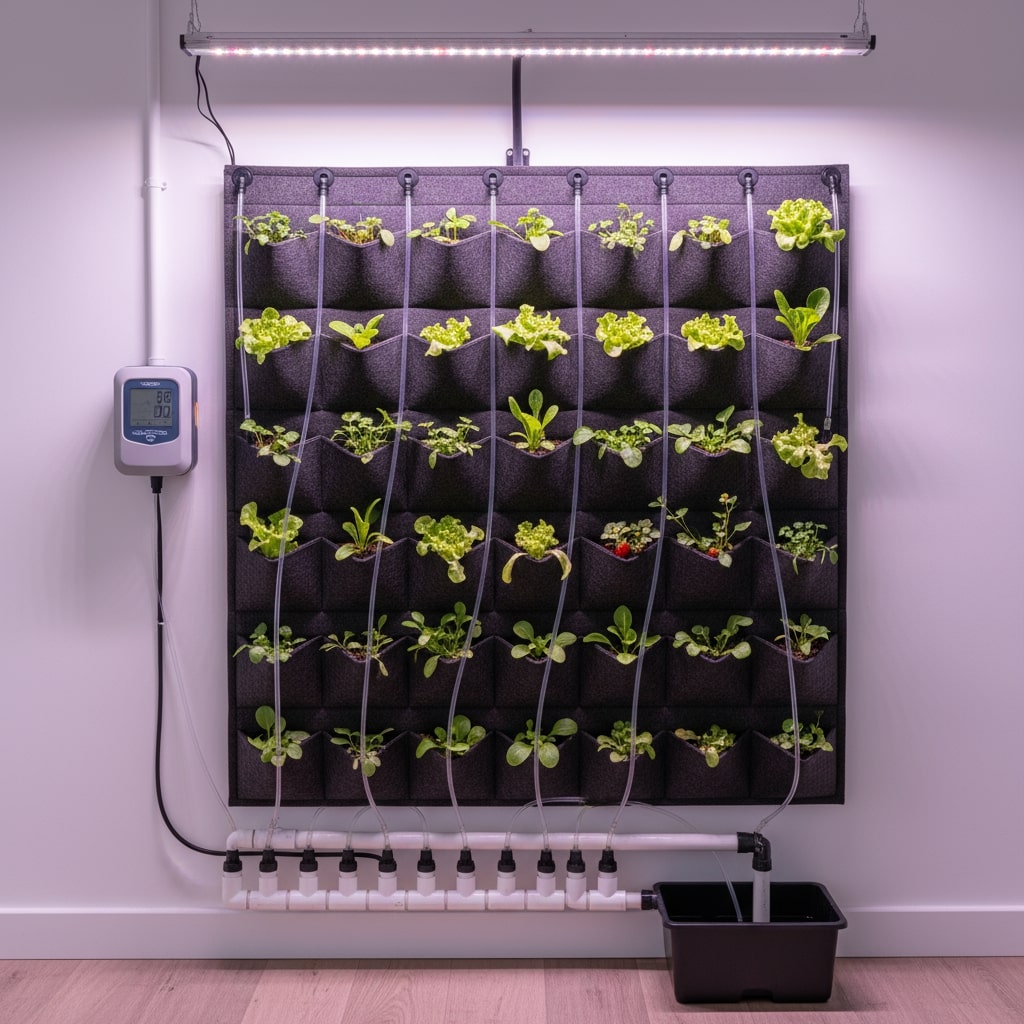
What is the Purpose of the Drip Irrigation System in a Vertical Garden
Imagine this: It’s 7 AM, you’re rushing to work, and you forgot to water your 15-plant vertical garden. With drip irrigation, you never face this problem.
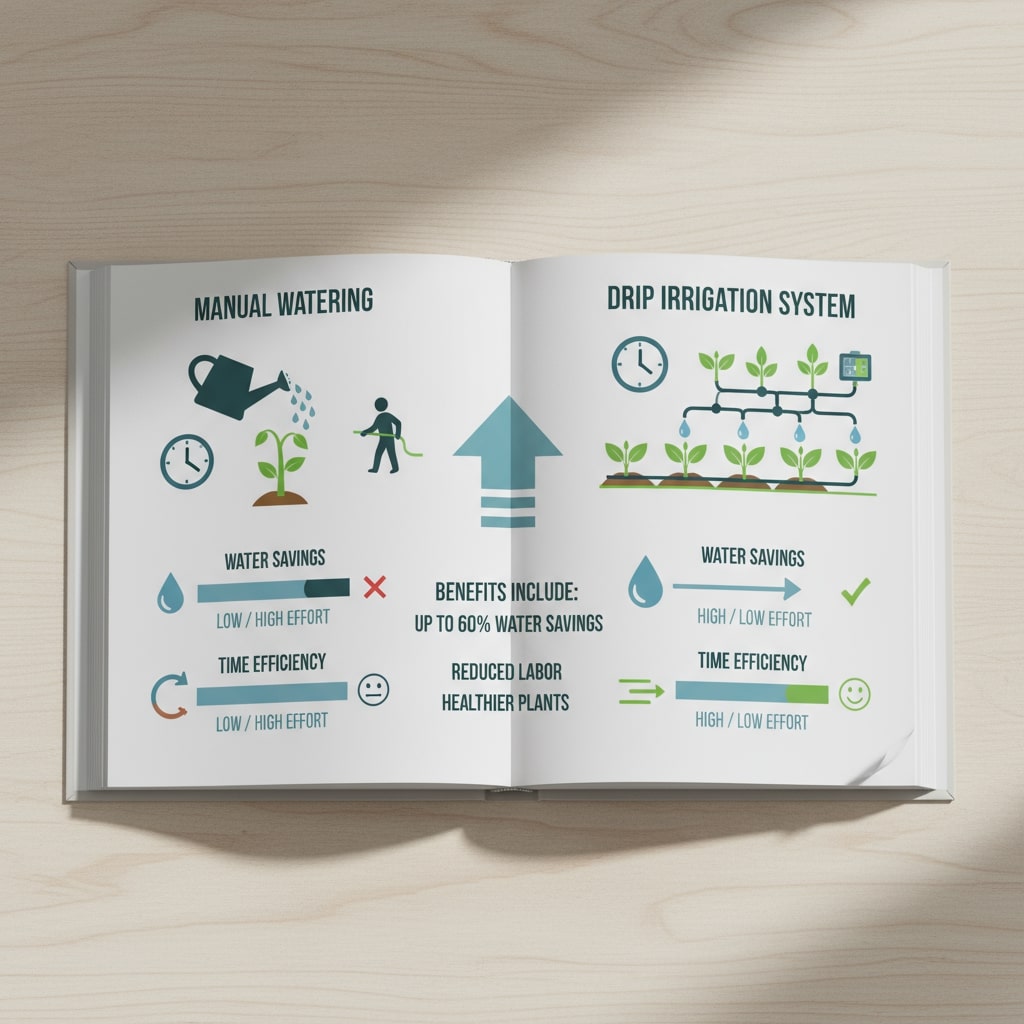
How It Saves Water
Drip systems deliver water directly to roots through tiny emitters, drop by drop. While traditional watering wastes 30-40% through evaporation and runoff, drip irrigation has 90% efficiency. In water-scarce Indian cities, that matters.
Real savings: My water bill dropped by ₹350/month after installing drip irrigation. That’s ₹4,200 annually—enough to pay for the system in just 4 months.
Prevents Plant Diseases
Wet leaves invite fungal problems, especially during monsoon. Drip systems keep foliage completely dry while roots get consistent moisture. This alone reduces fungal diseases by 70% according to agricultural extension studies.
Perfect for Busy Lifestyles
Set a timer, and your garden waters itself—even when you’re traveling for a week. For beginners growing edibles in a hanging strawberry planter, drip irrigation ensures strawberries get daily moisture without constant attention.
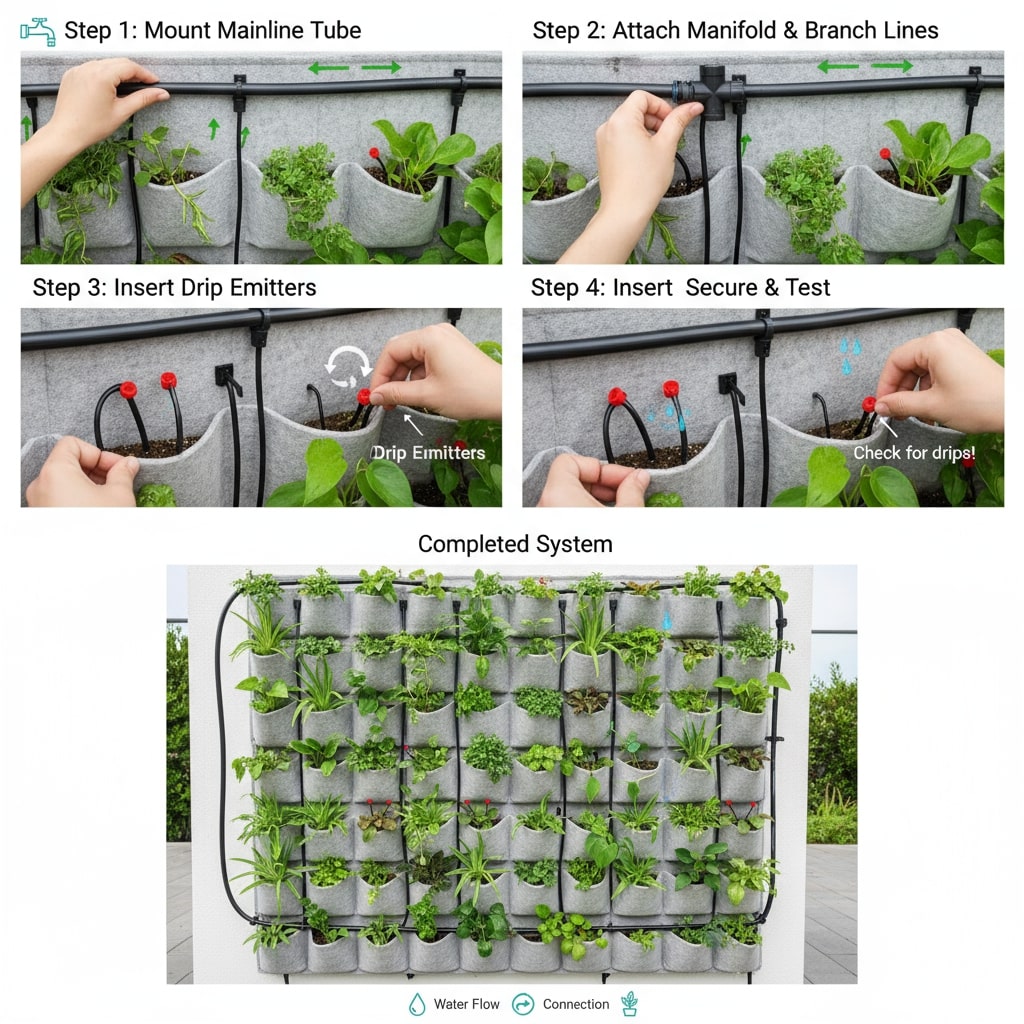
Types for Indian Apartments
Basic Gravity System (₹400-800): Uses a water bucket placed higher than plants. Perfect for balcony vertical gardens up to 10 plants.
Automatic Timer System (₹1,200-2,000): Connects to tap, waters plants at set times. Ideal for indoor walls with 15+ plants.
DIY Bottle Drip (₹0): Poke small holes in plastic bottle caps, fill with water, invert into soil. Great for testing drip concepts before investing in proper systems.
Installation takes 30 minutes: Attach main tube to water source, run feeder tubes to each pot, place one emitter per plant. Test by running water for 5 minutes and adjusting emitter positions.
Step-by-Step Care Throughout the Year
Watering Like a Pro
Best Time: Water between 6-8 AM before heat intensifies. Evening watering (after 5 PM) works too, but morning is better—it prevents fungal growth overnight.
How Much: Water slowly until you see a few drops from drainage holes. Stop immediately—more water doesn’t mean healthier plants.
The Finger Test: Before every watering, stick your finger 2 inches deep.
Seasonal Changes:
- Summer needs daily watering in most cities
- Monsoon? Cut back to twice weekly—overwatering is now the bigger danger
- Winter requires water only when soil dries out, usually every 4-5 days
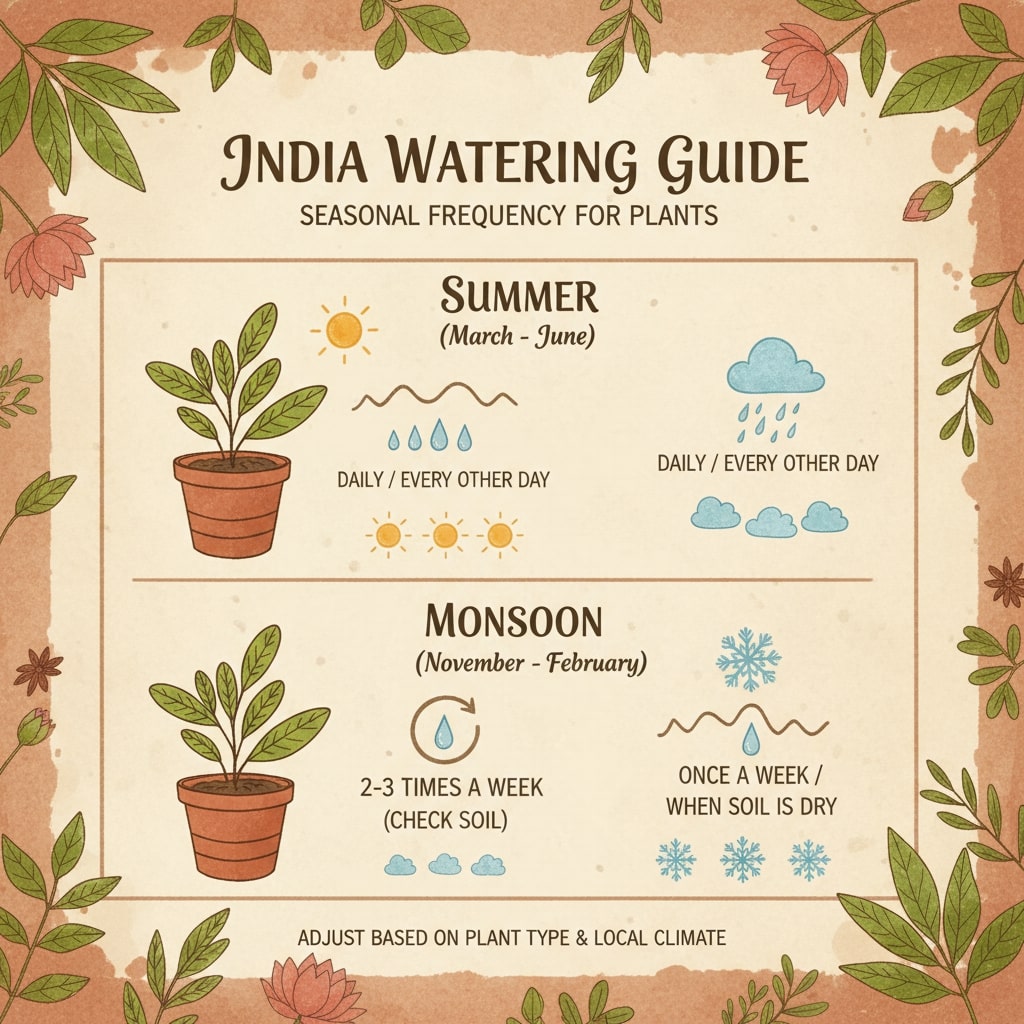
Getting Sunlight Right
Most vertical garden plants need 4-6 hours of indirect bright light. “Indirect” means sunlight filtered through a sheer curtain—not harsh afternoon sun that scorches leaves.
Light Hack: Can’t provide natural light? Use full-spectrum LED grow lights (₹600-1,200) positioned 6-12 inches from plants, running 10-12 hours daily.
Rotation: Every 2 weeks, rotate planters 180 degrees so all sides get equal light. This prevents plants from leaning toward windows.
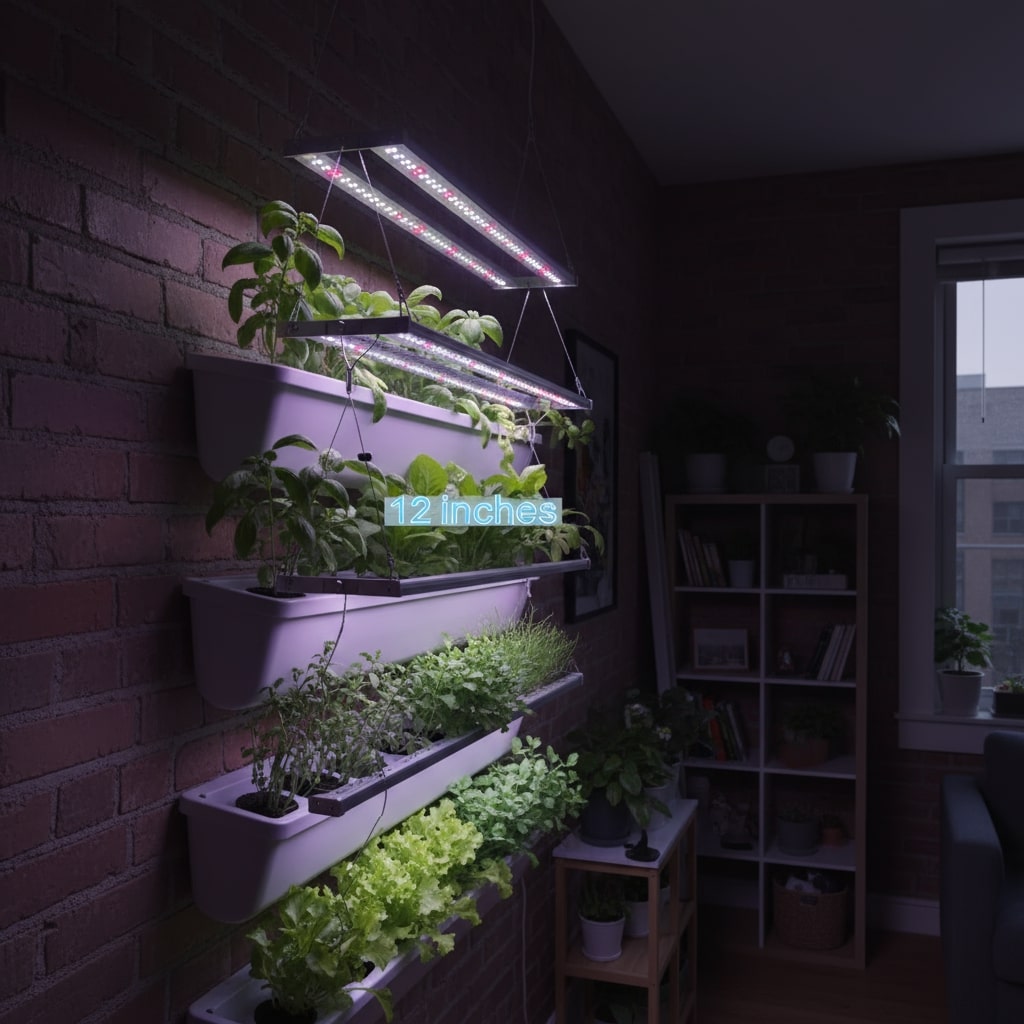
Fertilizer Schedule
Growing Season (March-September): Feed every 3 weeks with organic liquid fertilizer. Dilute to half the bottle’s recommended strength—better to under-feed than burn roots.
Monsoon Adjustment: Use slow-release pellets instead of liquid during July-September. Heavy monsoon rains wash away liquid fertilizers within days.
Winter Rest (November-February): Skip fertilizing entirely or give one light feeding in November. Plants grow slowly in winter and don’t need much nutrition.
Best Options:
- Vermicompost tea (soak vermicompost in water overnight, strain, use liquid)
- Seaweed extract (₹300-500)
- Diluted cow dung slurry
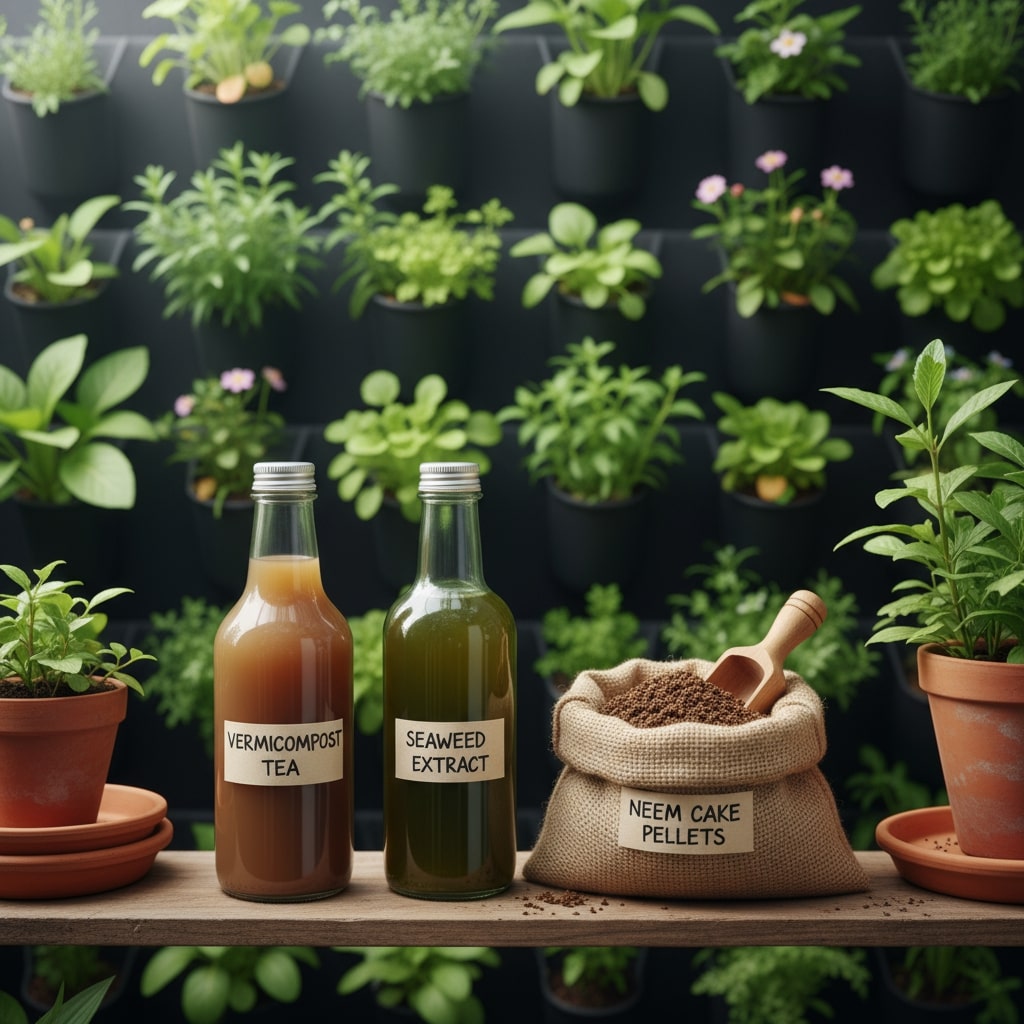
Pruning and Cleaning
Monthly Dusting: Indian city dust blocks 30% of light from reaching leaves. Wipe both sides of each leaf with a damp cloth monthly.
Remove Dead Leaves: Yellow or brown leaves drain energy from healthy parts. Pluck them immediately—don’t leave them in pots where they attract pests.
Shape Your Garden: Trim overgrown vines every 4-6 weeks to maintain neat appearance. Cut just above a leaf node (where leaves meet stem) to encourage branching.
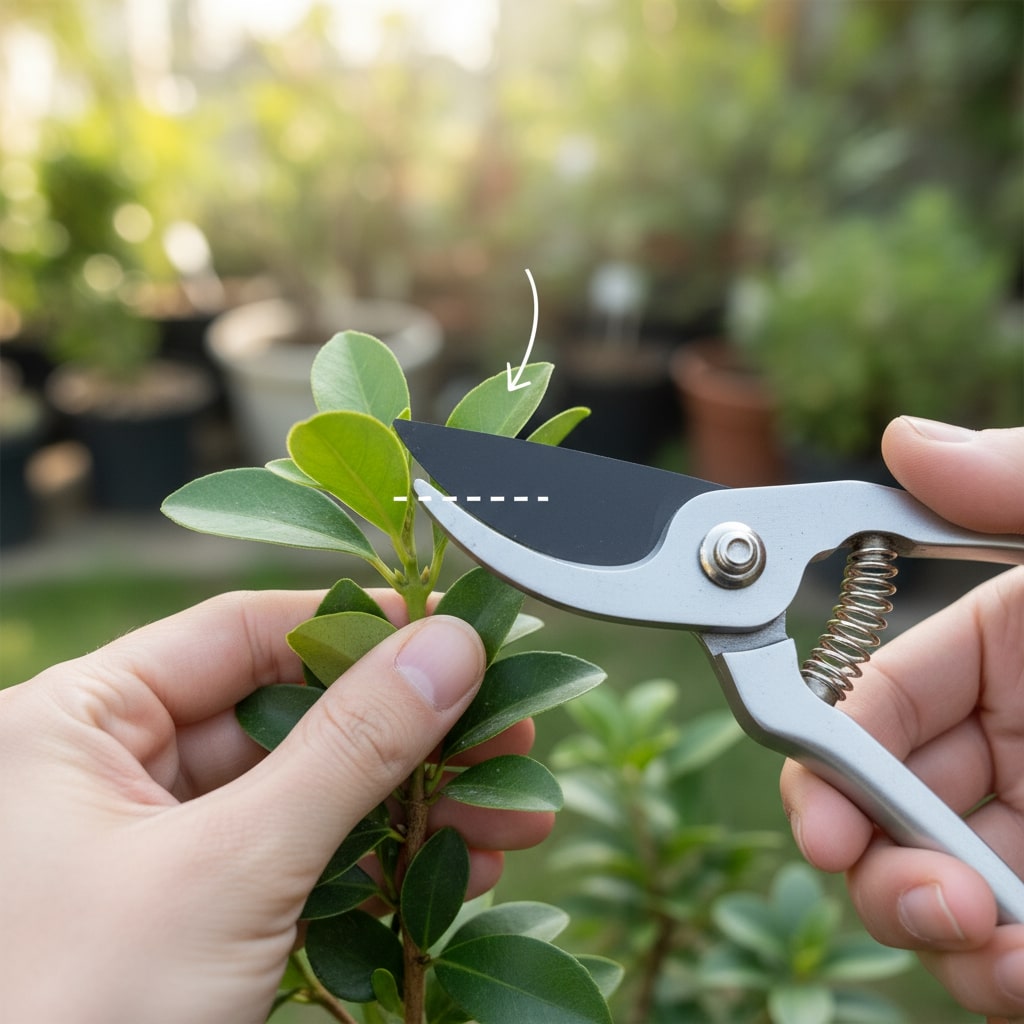
Pest Prevention
Neem Oil Spray: Mix 5ml neem oil + 2-3 drops dish soap + 1L water. Spray every 2 weeks as prevention, weekly if you spot pests.
Isolation: See bugs on one plant? Move it away immediately. Pests spread fast in closely-packed vertical gardens.
Natural Predators: Encourage small ladybugs and spiders—they eat harmful insects.
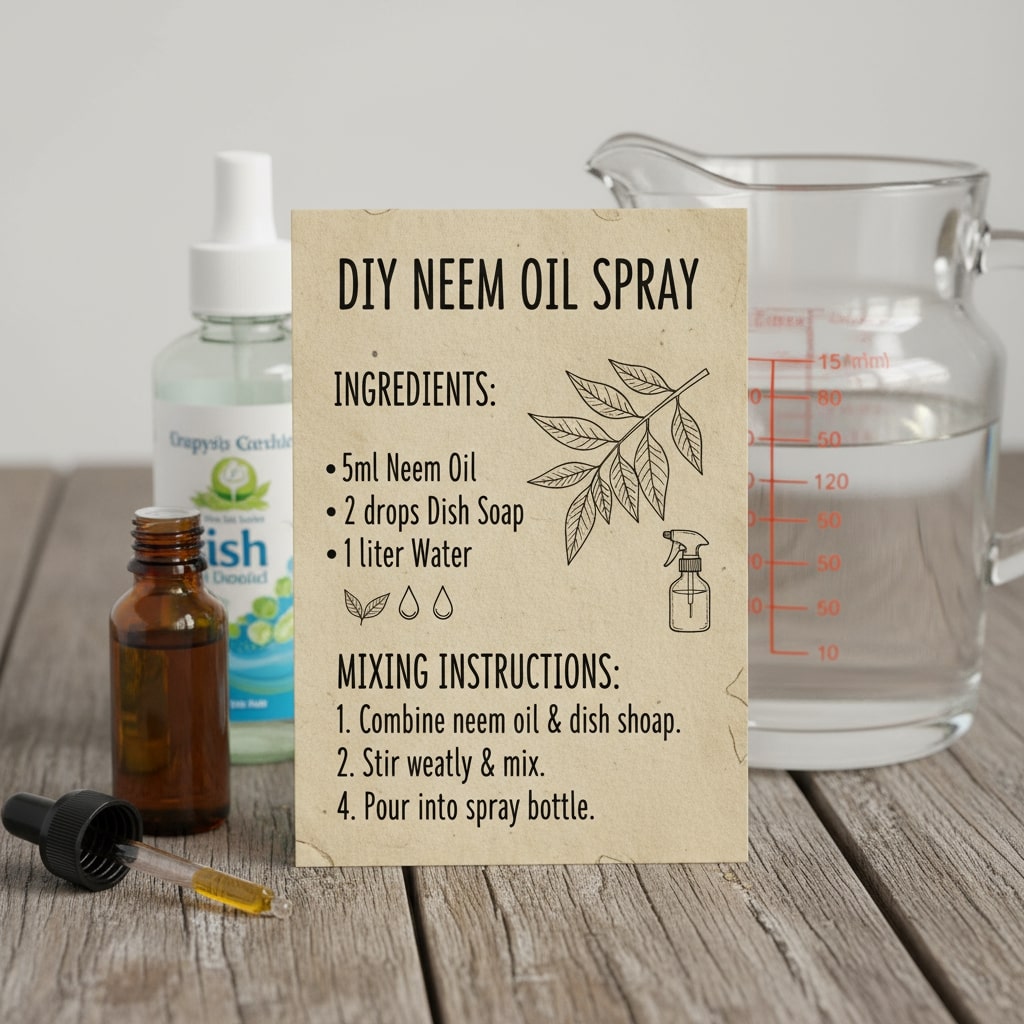
Adapting to Indian Seasons
India’s dramatic seasons need different care approaches. Here’s your seasonal quick-reference guide:
Summer Care (March-June)
Challenge: Scorching heat dries soil within hours.
Solutions:
- Water daily, sometimes twice on 40°C+ days
- Add 1-inch mulch layer (cocopeat or dried leaves) to retain moisture
- Move sensitive plants away from direct afternoon sun
- Mist leaves every evening to combat dry air
Best performers: Snake plant, jade, aloe vera, portulaca
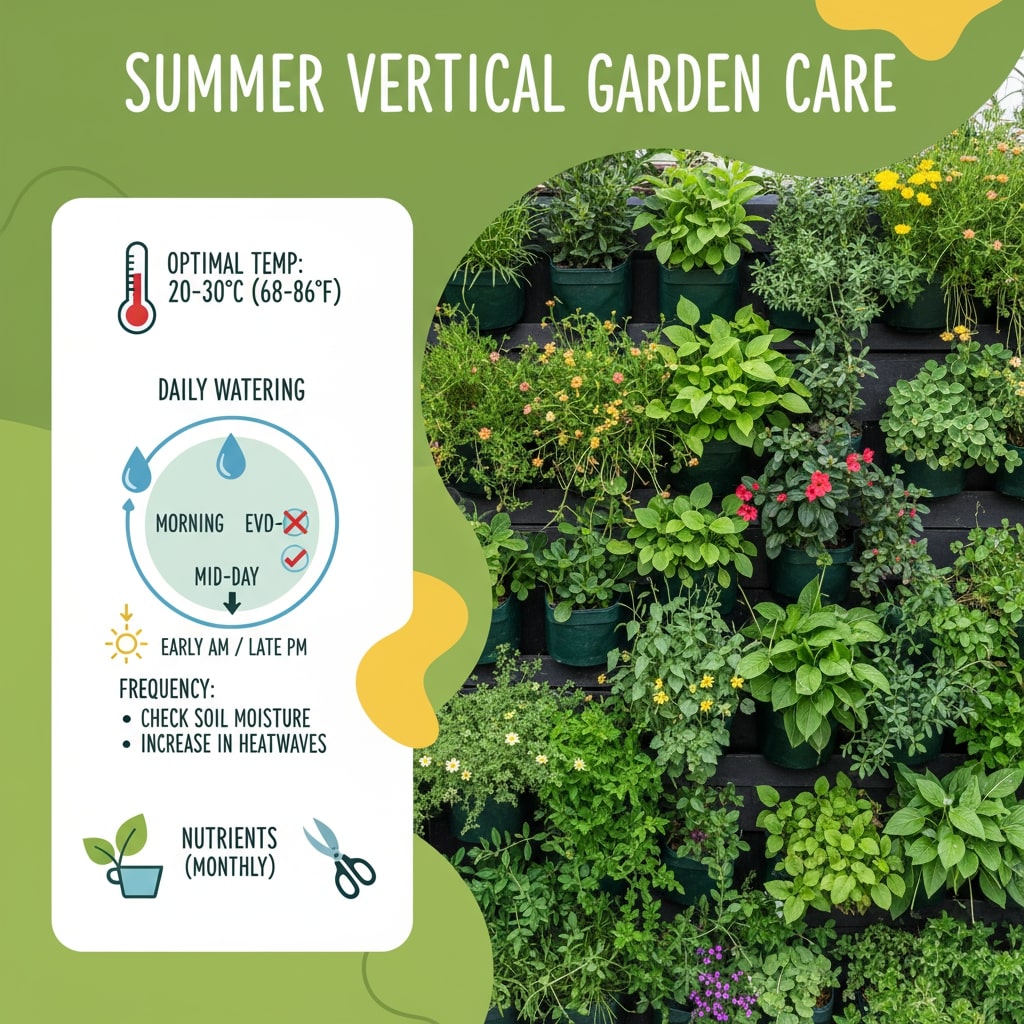
Monsoon Management (July-September)
Challenge: Excess moisture causes root rot and fungal attacks.
Solutions:
- Reduce watering to 2-3 times weekly
- Ensure perfect drainage—clear blocked holes immediately
- Prune dense growth to improve air flow
- Apply neem oil weekly to prevent fungus
- Bring wall planters under a small overhang if rain is relentless
Best performers: Pothos, philodendron, ferns, mint, basil
My monsoon mistake: I left my outdoor vertical garden fully exposed during 2024 monsoons. The constant rain + poor drainage = 8 plants lost to root rot. Now I use a transparent plastic sheet as rain shield during heavy downpours.
Winter Routine (October-February)
Challenge: Slow growth, cold drafts, reduced sunlight.
Solutions:
- Water only when soil is completely dry (every 4-6 days)
- Clean dried leaves and stems
- Add compost layer for gentle nutrition boost
- Move plants away from cold drafts near windows at night
Best performers: Peace lily, snake plant, pothos, rosemary, lavender
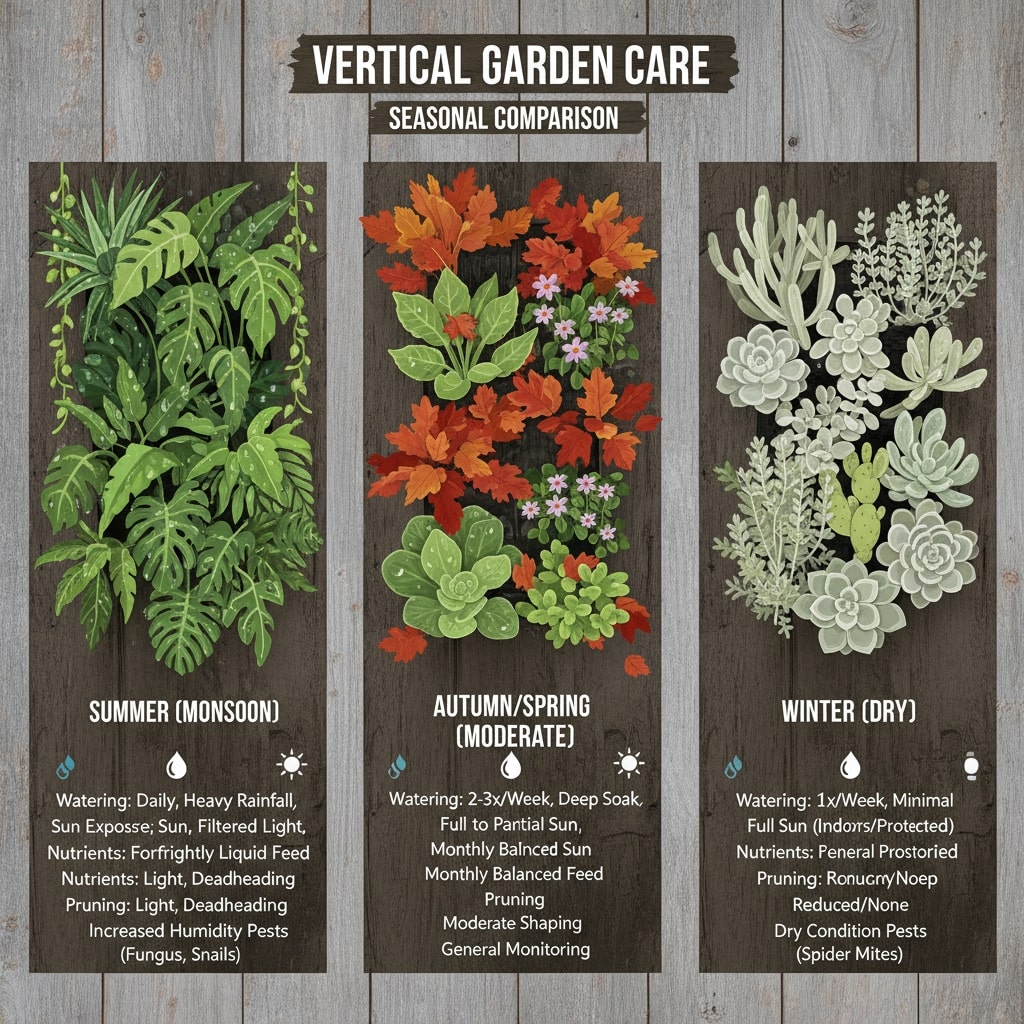
Recommended Tools and Materials
Setting up your vertical garden is easier with the right products. Here are tried-and-tested recommendations from Indian gardeners, with realistic prices from major online retailers:
| Product | Purpose | Price (₹) | Best For | Link |
|---|---|---|---|---|
| Cocopeat 5kg Block | Lightweight potting base | 200-400 | All vertical gardens | Buy Now |
| Ready Potting Mix 10kg | Saves mixing time | 350-550 | Beginners | Buy Now |
| Perlite 1kg | Better drainage | 180-300 | Preventing waterlogging | Buy Now |
| Neem Oil 200ml | Organic pest control | 150-250 | Monthly prevention | Buy Now |
| Liquid Fertilizer 500ml | Plant nutrition | 250-450 | Growing season feeding | Buy Now |
| Drip Kit (15 plants) | Automated watering | 1200-1800 | Busy schedules | Buy Now |
| Wall Planter Set (4 pots) | Space-saving display | 700-1300 | Small apartments | Buy Now |
| Bamboo Hanging Pots (3) | Eco-friendly aesthetic | 450-850 | Indoor decoration | Buy Now |
| Moisture Meter | Check soil wetness | 200-400 | Preventing over/underwatering | Buy Now |
| Long-Spout Watering Can | Reach high planters | 300-650 | Manual watering precision | Buy Now |
Budget breakdown: Starting a 10-plant vertical garden costs ₹3,000-5,000 including planters, soil, plants, and basic tools. Add ₹1,500 if choosing drip irrigation.
Where to buy: Ugaoo, Nurserylive, Amazon India, and local nurseries stock these items. Compare prices—local markets often beat online rates for soil and pots.
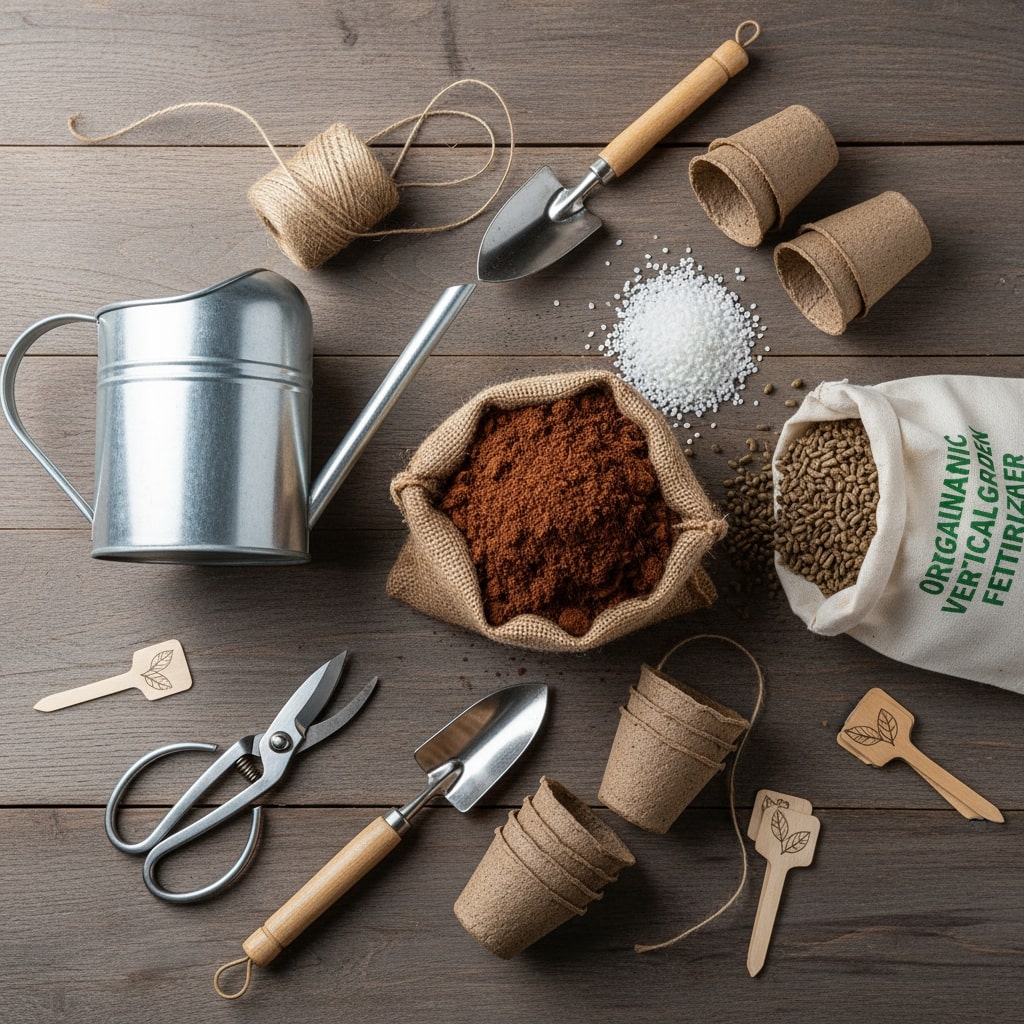
Troubleshooting Guide
Problem 1: Yellow Leaves
Cause: Overwatering or nitrogen deficiency.
Fix: Let soil dry out completely, then resume watering less frequently. Add diluted fertilizer if yellowing continues after adjusting water.
Problem 2: Brown Leaf Tips
Cause: Low humidity, over-fertilizing, or chlorine in tap water.
Fix: Mist plants daily, flush soil with plain water, or let tap water sit overnight before using.
Problem 3: Leggy Growth
Fix: Move plants closer to windows or add grow lights. Prune leggy stems to encourage bushier growth.
Problem 4: Pests Keep Returning
Cause: Not treating thoroughly or nearby infected plants.
Fix: Isolate infected plants, spray neem oil on all surfaces (including undersides), repeat weekly for 3 weeks.
Problem 5: Wilting Despite Wet Soil
Cause: Root rot from poor drainage.
Fix: Immediately repot in fresh soilless mix with better drainage, trim black/mushy roots before replanting.
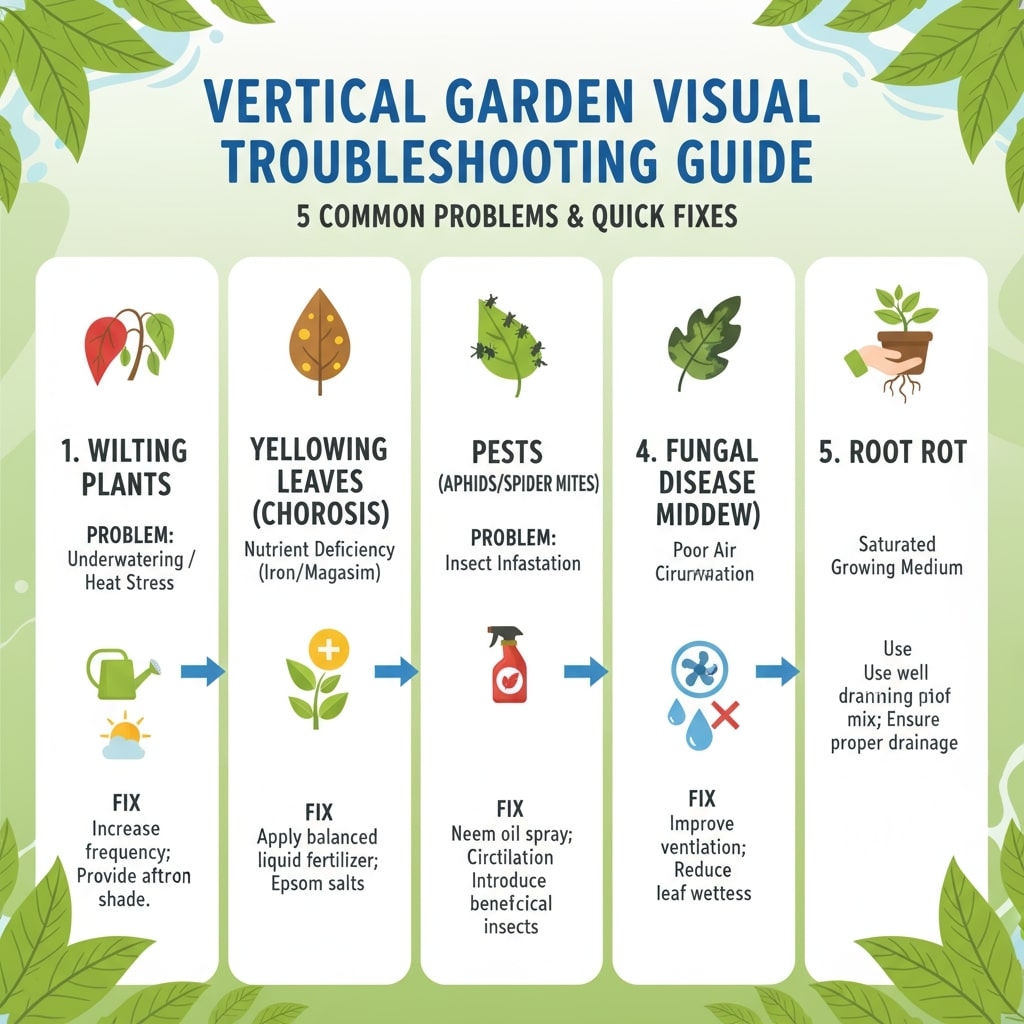
Your Questions Answered
Q1: How often should I water my vertical garden in India?
Q2: Can I use regular garden soil in vertical planters?
Q3: Which plants need the least maintenance?
Q4: Is drip irrigation necessary?
Conclusion
Maintaining your indoor vertical garden isn’t about having a green thumb—it’s about building simple habits. Check moisture every few days, water when needed (not by schedule), feed monthly during growing season, and adjust care with seasons. That’s honestly 90% of the work.
Start with five hardy plants, use the right potting mix, and don’t overthink it. Most beginners fail because they over-care, not under-care. Trust the process, watch your plants, and they’ll tell you what they need.
Ready to begin? Grab some eco-friendly plants for gardens perfect for Indian homes, or try a hanging strawberry planter for your first vertical setup. Your green wall awaits—and it’s easier than you think.
About the Author
Zaid Ansari is a passionate indoor gardening enthusiast who helps beginners create thriving vertical gardens in Indian apartments. He shares practical tips, step-by-step guides, and recommended products for effortless indoor gardening. With years of experience transforming cramped Mumbai and Delhi spaces into lush sanctuaries, Zaid believes everyone deserves fresh air and green beauty at home—no backyard required. Follow his journey at FlatGardening.com.
Pingback: Spider Plant Watering Tips: 1 Mistake Kills Yours 🌿- 2025
Pingback: Weekly Seasonal Gardening Tips That Saved 10,000+ Gardens